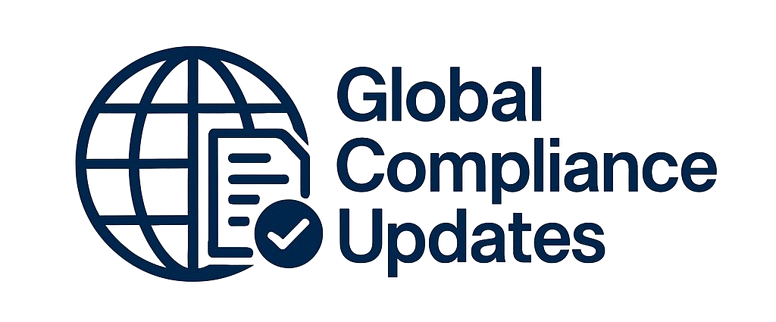"When someone shows you who they are, believe them the first time" Maya Angelou
Toxicity in the workplace acts like an infectious disease - it spreads and infiltrates teams and relationships, Without the understanding, skills and tools applied intentionally, toxicity will continue to spread eventually impairing the organization and burning out the leaders and staff.
In some organizations, toxicity has a seemingly intractable hold on the culture - it's rampant. In other organizations, it is more covert but no less debilitating to the organization and the people.
People who would not normally exhibit toxic behaviour begin reacting to the toxicity of others in ways that are negative and harmful to productivity and relationships. This is the beginning of a downward spiral. Toxicity feeding off toxicity. Good people will leave the team and organization.
Toxic behaviours won't go away if they are ignored. They will fester.
Specific and intentional action is the only way to counter toxicity. There are skills and tactics that will work once the underlying behaviours are identified and understood.
Only by learning how to identify toxic behaviours and developing a specific plan to confront and incapacitate them, will the workplace become safe and harmonious.
WHY SHOULD YOU ATTEND?
Having to deal with toxic people is overwhelming and frustrating.
The non-sensical conversations, ad hominem attacks, misrepresentations, deception, lack of taking responsibility for their actions, defensiveness, back-stabbing, condescension, and sarcasm are exhausting.
You'd like to just get the job done, without feeling like you're going into battle. You avoid them as much as possible, find reasons for not working with them, maybe even miss meetings they will be attending, anything to not have to interact with them - but there's no way around it, sometimes you just have to work with them.
Toxic people can show up anywhere in your work or personal life - they can be customers, vendors, staff, colleagues, or managers. Toxic people have specific behaviors which require specific strategies for dealing with them - they are much different from the strategies and tactics for dealing with people who are merely difficult.
Learning to distinguish the truly toxic from the difficult and having a range of tools and techniques readily available will give you a major advantage in getting desired outcomes.
Toxic people can also be very destructive to relationships - one of the first rules of dealing with toxic people is to learn to protect yourself.
In this engaging and practical webinar, you will learn key strategies, tactics, and skills to protect your emotional and psychological well-being, without acquiescing, getting walked on, controlled, or dominated, while also getting the job done, efficiently and effectively.
AREA COVERED
- You work in a team or group environment
- You interact with the public
- You have a team or organizational leadership role
- You want to have less stress and more control of interactions
LEARNING OBJECTIVES
- The drivers of toxic behavior - why they do what they do
- Specific tactics, tips, and tools for responding to toxic communications
- How to stay centered and present when faced with toxicity
- A key to relieving your own frustrating
- How to get work done, have effective communication and not let them control your life
WHO WILL BENEFIT?
- People from all organizational levels can benefit from these strategies.
Having to deal with toxic people is overwhelming and frustrating.
The non-sensical conversations, ad hominem attacks, misrepresentations, deception, lack of taking responsibility for their actions, defensiveness, back-stabbing, condescension, and sarcasm are exhausting.
You'd like to just get the job done, without feeling like you're going into battle. You avoid them as much as possible, find reasons for not working with them, maybe even miss meetings they will be attending, anything to not have to interact with them - but there's no way around it, sometimes you just have to work with them.
Toxic people can show up anywhere in your work or personal life - they can be customers, vendors, staff, colleagues, or managers. Toxic people have specific behaviors which require specific strategies for dealing with them - they are much different from the strategies and tactics for dealing with people who are merely difficult.
Learning to distinguish the truly toxic from the difficult and having a range of tools and techniques readily available will give you a major advantage in getting desired outcomes.
Toxic people can also be very destructive to relationships - one of the first rules of dealing with toxic people is to learn to protect yourself.
In this engaging and practical webinar, you will learn key strategies, tactics, and skills to protect your emotional and psychological well-being, without acquiescing, getting walked on, controlled, or dominated, while also getting the job done, efficiently and effectively.
- You work in a team or group environment
- You interact with the public
- You have a team or organizational leadership role
- You want to have less stress and more control of interactions
- The drivers of toxic behavior - why they do what they do
- Specific tactics, tips, and tools for responding to toxic communications
- How to stay centered and present when faced with toxicity
- A key to relieving your own frustrating
- How to get work done, have effective communication and not let them control your life
- People from all organizational levels can benefit from these strategies.
Speaker Profile
 Michael Healey
Michael Healey
Michael Healey Since 1987 he has been consulting with businesses and organizations that understand the value of developing organizational culture and their people as a foundation for continual improvement and enhancing organizational capacity.From large multi-national to entrepreneurial organizations, government and NGO's, and across the spectrum of executive, senior managers, supervisors and staff
Upcoming Webinars

The Importance of the first 5 seconds when presenting

Project Management for administrative professionals

How to Reduce Human Error in a GMP Manufacturing Floor

Trump’s Executive Orders on DEI and Disparate Impact, and t…

How Accountants Can Use Chat GPT Effectively


The OBBBA Era & Beyond: Your 2025 Playbook for Compliance a…

Pivot tables beginner to advanced + 20 advanced Pivot table…

Changing Behavior: Why Rewards and Punishments Often Aren't…

Launch Your Career: The Ultimate Guide for Emerging Profess…

ChatGPT Unlocked: A Beginner’s Guide to AI and ChatGPT

Managing Toxic & Other Employees Who Have Attitude Issues

Data Integrity – In compliance with CSA, 21 CFR Part 11, Sa…

Effectively Handle Toxic People for Better Productivity and…

Re-imagine Finance & Accounting Made Simple. Three Webinars…

Employee Handbooks: 2025 Critical Issues

Better Business Writing-How to Write Right

The five qualities every successful leader must develop



How to Lead and Manage a Narcissistic Employee

Use of AI and GPT for Finance Professionals

ChatGPT and Project Management: Leveraging AI for Project M…

Analytical Method Validation Under Good Laboratory Practic…

Harassment, Bullying, Gossip, Confrontational and Disruptiv…

Excel What-If-Analysis Decision-Making Tools

How to Write Contracts for Procurement Professionals

Maximizing Productivity with ChatGPT: AI Solutions for HR, …

I-9 Audits: Strengthening Your Immigration Compliance Strat…

Dealing With Difficult People: At Work & In Life

Excel - Reporting Simplified - Learn Pivot Tables from Scra…



Retention Starts Here: Stop Losing Your Critical Talent and…

Turning Workplace Conflict into Positive Connection

Project Management for Non-Project Managers - How to commun…


The Business Case for LGBTQIA+ Inclusion in the Workplace: …

Conquer Toxic People - Learn To Protect Yourself And Get Yo…


AI-Powered Change Leadership Operationalizing AI: Practical…

AI and Human Resources: The Great Opportunity!

Cyber Security Incident Response Team Training Program

Transforming Anger And Conflict Into Collaborative Problem …


The Courage to Speak: Overcoming Fear and Owning the Room

Finance & Accounting 101 Simplified

6-Hour Virtual Boot Camp on Microsoft Power BI
